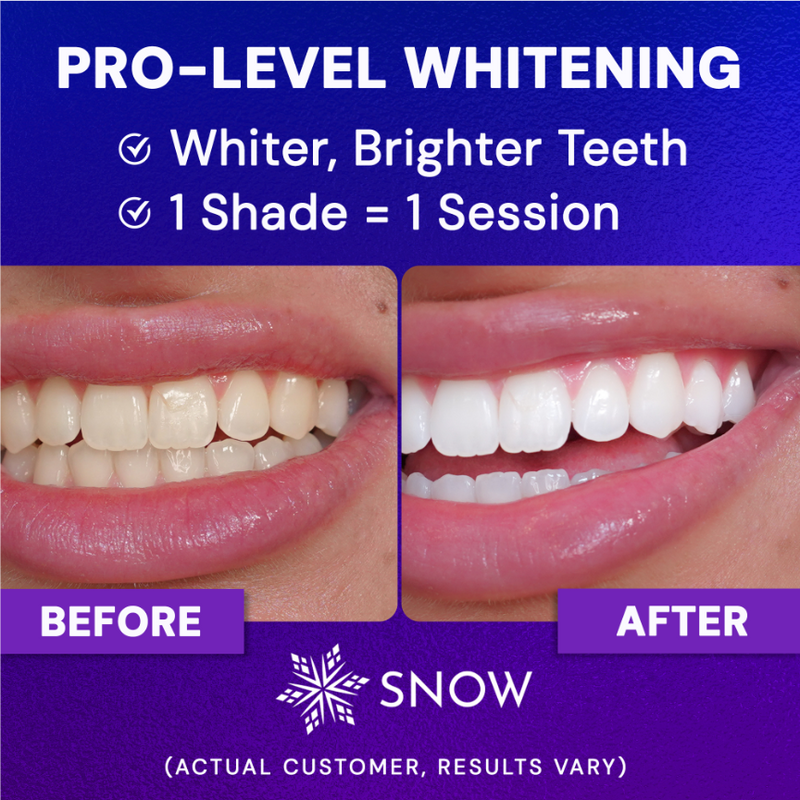In tooth enamel, teeth craze lines are thin, small vertical cracks that typically develop as people age and are essentially cracked teeth. They are also known as superficial lines or hairline enamel cracks.
Sometimes the appearance of tiny cracks or craze lines is translucent. Visible craze lines could also appear brown, gray, or yellow.
The appearance of craze lines on your front teeth may appear overnight, and you might find them unsightly. But unless you look for them, craze lines tend to go unnoticed and are challenging to see.
A cracked tooth becomes stained quickly if you have craze lines. Because of this, there might be more noticeable superficial lines when they accumulate stain particles in those who use tobacco products or consume dark-colored beverages or those without proper dental hygiene.
WHAT DO TEETH CRAZE LINES MEAN?
When you see tiny lines running through their front teeth, some people worry they have a dental emergency. However, it is only a cosmetic concern, unlike large cracks, which are dangerous for oral health. In most cases, though, there is no need to be alarmed if you notice them because they could be craze lines (a harmless, common cosmetic imperfection).
In dental health, "craze line" is a common phrase. Vertical lines, known as enamel craze lines, are visible on the outer surface of teeth. Both the front and back teeth may exhibit them. Craze lines typically start to show as people get older. They could appear transparent or yellow, gray, or brown.
AGING CAUSES CRAZE LINES
As one ages, the human enamel loses permeability and becomes discolored. With age, vertical cracks and existing enamel craze lines also become more visible.
Small cracks, also known as "hairline cracks," are what are causing craze lines. They only impact the enamel and the tooth's outer layer and don't penetrate the tooth dentin (the middle layer) or affect dental health.
CAN A CRAZE LINE DEVELOP INTO A TOOTH CRACK?
Anytime you notice teeny, tiny white lines on teeth, mainly if there are several of them, they usually have a superficial appearance. But compared to the tooth enamel all around it, that point is unquestionably a weaker area of your tooth. There is always a chance that a crack could happen at one of these points.
It might be compared to a worn-out porcelain plate. Even though your dental plate is still intact, you might notice a few tiny surface cracks here and there. If you handle it properly, it doesn't mean you can't use it or that it will break, but it does mean the porcelain is getting older and showing signs of age.
The situation is essentially the same when it comes to the enamel on your teeth. Teeth have minute lines, but they are more surface-level than structural. However, you might put too much strain on them if you keep bad habits like chewing on pens or fingernails. Already vulnerable areas might immediately crack with pressure. Although deep cracks don't always develop from craze lines, the possibility exists if you apply too much unusual force and damage your teeth.
THE ORIGINS OF CRAZE LINES
Tooth fractures can have several causes. Among the prominent ones are:
- Hefty fillings that damage your teeth under pressure.
- Hitting a hard object, such as ice cubes, fruit foods, or bones, when chewing food.
- A forceful blow to the chin or jaw.
- The bone loss brought on by gum disease, which can weaken teeth.
- Your mouth's temperature changes quickly, usually as a result of food and beverages.
Another frequent reason for tooth fractures is bruxism, or teeth grinding. You might not even be aware that you clench or grind your teeth. Whether you're awake or sleeping, it can still happen.
Usually, mild grinding doesn't require any therapy. Teeth damage, cracked teeth, and migraines can result from severe and persistent teeth grinding. Craze lines and other fractures might result from teeth that are already weak and from grinding their teeth.
HOW FREQUENTLY DO CRAZE LINES OCCUR?
Clinical observations of craze lines on tooth enamel are frequent. The frenzy lines can appear on even healthy teeth. However, as one ages, they become more noticeable. They are, therefore, quite prevalent in adult teeth.
CRACKS VERSUS CRAZE LINES
In dentistry, the phrases cracks and craze lines are sometimes used interchangeably. They do not, however, signify the same thing.
A craze line is a microscopic fissure that only affects tooth enamel and often doesn't cause symptoms. In most cases, craze lines don't require treatment for cosmetic reasons.
On the other hand, a crack impacts the dentin in addition to the outer enamel. Due to the fissures' central position, the pulp eventually suffers.
Usually, cracked teeth need to be treated (such as root canal treatment). The diagnosis will determine whether to treat and repair teeth. Within six months, 20% of fractured tooth instances determined to be reversibly inflamed will require root canal therapy from a dentist.
WHICH ALTERNATIVES ARE THERE TO FIXING CRAZE LINES?
You can do things at home to prevent craze lines if you don't like the way they look, such as whitening strips or whitening toothpaste.
Snow has several high quality products that can give you high quality at-home whitening in a kit with a tray for your teeth.
Adding color to craze lines, hiding them, or altering the surface of your teeth are further professional alternatives that you can take advantage of.
DO CRAZE LINES DISAPPEAR?
Craze lines are difficult to avoid. Stopping nail-biting or chewing ice can help.
Lifestyle adjustments that help you relax and unwind may reduce tooth grinding. Meditation, frequent walks, warm baths, and turning off gadgets before bedtime can help. Other self-help measures may lessen teeth grinding. Discuss a night guard with your dentist if this is a problem.
Stop using nicotine products and drinking dark beverages to decrease or avoid craze lines. This prevents craze lines from darkening.
Summary
Teeth can develop craze lines. They're superficial and don't get worse unless there is an injury. Insufficient dental hygiene can lead to cavities. In addition, at-home whitening or dental treatments may help craze lines.
FAQs
Can you fix craze lines in teeth?
Veneers can hide craze lines. Veneers can fix chipping, cracks, and unevenness to make teeth look younger. While craze lines on your teeth may be frightening, they're generally cosmetic.
What causes crazing in teeth?
Too much bite pressure on the teeth can accumulate over many years of eating. The majority of individuals get craze lines just through everyday wear and tear. They may also result from dental trauma, such as long-term clenching and grinding.
Should I worry about craze lines?
Crazy crowds are a typical and frequent phenomenon. They don't indicate that your teeth are brittle or vulnerable to breaks. Typically, they don't become worse or cause cracks. However, they may increase the risk of tooth decay, but seldom on the front teeth.
How do you reduce craze lines?
By eliminating undesirable behaviors that stress your teeth externally, such as nail biting, oral jewelry contact, crunching down on the ice, opening bottle lids, and otherwise utilizing your teeth for anything other than eating food, you may help prevent more craze lines.





































































